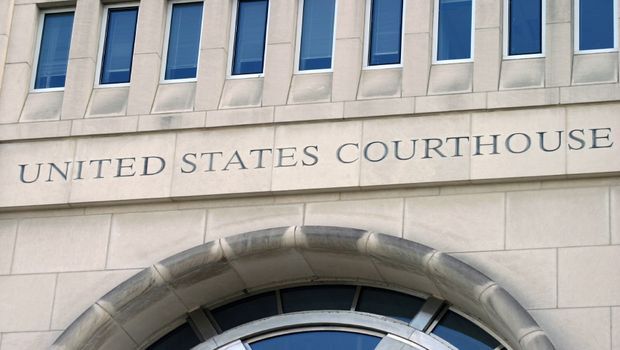In a case involving the legality of DMAA in dietary supplements, an appeals court judge drilled a government lawyer over the district court's 2017 ruling.

During oral arguments this month over the legality of a controversial ingredient in dietary supplements, an appellate court judge seemed inclined to send a lawsuit back to the district court after that court adopted a novel theory that the prevailing party—the U.S. government—had not offered as a basis for its forfeiture action.
In a case involving Hi-Tech Pharmaceuticals Inc., a manufacturer of dietary supplements, Circuit Judge Adalberto Jordan spent several minutes drilling a government lawyer over the district court’s decision.
In 2017, U.S. District Court Judge Willis B. Hunt Jr. determined DMAA did not qualify as a botanical under the Dietary Supplement Health and Education Act of 1994 (DSHEA). Hi-Tech’s DMAA-containing products, he ruled, were subject to forfeiture.
“This court concludes that in using the term botanical, Congress intended that there must be at least some history of the substance in question having been extracted in usable quantities from a plant or a plant-like organism,” Hunt wrote in his decision, granting summary judgment to the U.S. government.
The ruling avoided the need for a bench or jury trial, prompting Hi-Tech to challenge the decision with the U.S. Court of Appeals for the Eleventh Circuit. On Aug. 17, during oral arguments before the Eleventh Circuit, a judge pointed out the lower court’s decision did not reflect an interpretation of law offered by the government in its forfeiture action.
“However you view it, the district court adopted an interpretation that you had not proposed; am I right so far?” Circuit Court Judge Adalberto Jordan asked a government lawyer.
“That’s correct,” answered Daniel Aguilar, a lawyer for the U.S. Department of Justice, which represented FDA in the case.
The judge suggested Hi-Tech should have been given the opportunity to conduct discovery to establish DMAA had a history of extraction.
“If the district court came up with this interpretation of the statutory framework without your assistance and without you proposing it, why wasn’t Hi-Tech entitled to at least some limited discovery to determine or make an argument as best as it could that there had been a history of commercial extraction?” Jordan asked. “In other words, if that issue had never been teed up by either side during the case and at summary judgment, why wasn’t Hi-Tech entitled to an opportunity to prove its case under the district court’s theory?”
Aguilar said Hi-Tech would have to show the decision was prejudicial, and he suggested it was a harmless error. Hi-Tech, he said, stipulated the highest levels in which DMAA had been shown in the geranium plant was 365 parts per billion.
“The parties’ evidentiary dispute was, ‘Did DMAA exist at all in geraniums?’ Hi-Tech’s best evidence was that it existed at 365 parts per billion,” Aguilar said.
“Well, best evidence without discovery,” Jordan responded.
He added, “You can’t ask a party to show prejudice due to lack of discovery without giving them discovery.”
Aguilar replied: “But they had discovery on this, Your Honor.”
The judge wasn’t convinced.
“No, they did not,” Jordan said. “You did not tee up the issue. The government … has the burden in a forfeiture proceeding, and you have to assert a legal theory on which the government can forfeit goods. Is that correct?”
“Yes,” Aguilar acknowledged.
“And if you tee up a certain theory, if you say these goods are forfeitable for reason X, that’s the only reason that the claimant has to fight,” the judge explained. “It doesn’t have to fight other things in the ether that it doesn’t know about.”
Jordan asked Aguilar if the government would have appealed if the district court had ruled in favor of Hi-Tech based on a theory that the company had not advanced.
“I mean obviously that’s a deliberative process … to the Solicitor General, but I’ll assume that we would appeal that,” Aguilar acknowledged.
The judge later proclaimed, “You would have been incensed that a district court in an adversary system would have come up with a legal theory that neither side had advocated and not given you a chance to develop it, respond to it or do anything else. You would have been up here in a heartbeat.”
Meaning of Dietary Ingredient
John Neiman, an attorney in Birmingham, Alabama, appeared for oral arguments on Hi-Tech’s behalf. The district court not only erred in its interpretation of the law, Hi-Tech was entitled to win the case on summary judgment, he argued.
The district court, said Neiman, a shareholder with Maynard Cooper & Gale, “construed the words ‘constituent’ and ‘botanical’ in a way that their text won’t bear and that doesn’t make sense.”
“What do you think constituent means—as long as its present in a botanical, that enough?” Jordan asked Hi-Tech’s lawyer.
Neiman said the constituent must be “naturally occurring in the botanical.”
“The word ‘constituent’ means a part of something else—something that’s a part of something else,” the lawyer continued. “The word ‘botanical’ means plant so a constituent of a botanical is something that naturally occurs in a plant.”
He added, “The words ‘history of extraction’ and ‘commercially usable quantities’ do not appear in the statute. The statute simply says a constituent of a botanical is a dietary ingredient, not a constituent of a botanical that has a history of extraction in usable quantities.”
Among the three judges who heard the appeal: Robert Hinkle, from the U.S. District Court for the Northern District of Florida.
He was interested in how broadly Neiman interpreted what qualifies as a dietary ingredient.
“If I understand it, your position is that the term ‘dietary ingredient’ means any substance contained in flora and any identical substance that’s found or manufactured anywhere else?” Hinkle asked. “Anything in flora and any identical substance that’s manufactured in a lab or found anywhere in the world for any reason?”
Neiman agreed with the judge’s interpretation, but he added a caveat: the substance “needs to be naturally occurring” in a plant.
To qualify as a dietary ingredient, Aguilar suggested, a constituent like DMAA must have been physically extracted from a botanical like the geranium plant.
He referenced FDA enforcement actions leading up to passage of DSHEA, which amended the Federal Food, Drug & Cosmetic Act (FDCA).
“And in the Senate report to these amendments, the Congress stated that what it was concerned about was products like ginger, garlic, pine bark extract, caffeine, which is produced in plants,” the government lawyer said. “And it was concerned that these products that are obtained from plants and physically derived from them should be treated as a new category—a dietary ingredient for use in dietary supplements—and the list of words that Congress used in this statute—concentrate, metabolite, extract, combination and constituent—are methods of physically deriving something from a plant and preparing it for that use in a dietary supplement.”
Hinkle asked a hypothetical question, highlighting a controversial and unsettled issue in the dietary supplement industry: whether a substance found in nature—but only made in a laboratory—would qualify as a dietary ingredient. Hi-Tech has acknowledged its DMAA is synthetically produced, although it presented research studies in the district court to show it is found in nature.
“So you’ve got a tree … it’s 50 percent magic dust but nobody has ever harvested the magic dust and made a dietary ingredient out of it,” Hinkle said. “Somebody comes along in the laboratory and makes a supplement with ABC magic dust, but it’s never been taken out of the truffula tree. Why isn’t that a dietary ingredient?”
Aguilar responded, “If something was present in such high quantities, I would think there would be a way you could just use the plant itself or part of the plant.”
Directions on Remand
The appeals court judges also seemed interested in what directions they should give the district court if they vacated its judgment.
In the district court, the government argued DMAA wasn’t a botanical, rendering it an unsafe food additive because it wasn’t generally recognized as safe (GRAS). Neiman argued the DMAA studies upon which the government itself relied revealed the presence of DMAA in geraniums. If the appeals court agreed with him, Hinkle asked Neiman, should the government be allowed to prove DMAA was unsafe.
The government should not be afforded such an opportunity because it seized “these materials on the premise that this was not a dietary ingredient,” Neiman responded, affirming in response to a question from Hinkle that the government would simply lose the case. “They did not plead in the alternative that this was unsafe.”
If the government wants to establish DMAA is unsafe, he added, the proper way to do so is through a rulemaking, as when the FDA banned sales of dietary supplements containing ephedra.
In his 2017 decision, Hunt wrote the government’s arguments were insufficient to meet its “burden of establishing that DMAA is not in geraniums.”
“It is undisputed that at least three different studies found DMAA in geraniums, and the fact that other studies, which may well have used different methodologies, did not detect DMAA is not determinative,” he said.
However, during oral arguments before the Eleventh Circuit, Aguilar argued Hunt “never made an explicit holding��” whether DMAA is present in geraniums; and he said the government should be allowed to litigate the matter in the district court even if the appeals court disagreed “with us on the threshold legal issue.”
Neiman was asked about testimony that fertilizer may be the source of DMAA in geranium plants. The lawyer said Hi-Tech’s expert noted “the amount of DMAA that is in fertilizer could not possibly explain the amount of DMAA that his study … found in the plants.”
“At the end of the day, the government has the burden of proof here,” Neiman said. “It’s always had the burden of proof … and if its theory is that fertilizer is causing the DMAA to be in the geraniums, it needed to establish that in this forfeiture proceeding where it seized $2 million of my client’s products.”
But the appeals court judges noted that on Hi-Tech’s motion for summary judgment—a request to prevail in the case as a matter of law without having to go to trial—inferences are drawn in the light most favorable to the government.
Aguilar agreed the above legal standard applied. “But I don’t think that drawing every inference in favor of the government here gets them to the point where they can get past summary judgment,” Hi-Tech’s lawyer said. “Again, they have the burden of proof. This is a forfeiture proceeding. They’re seizing my client’s property.”
Judge Gerald Bard Tjoflat suggested the government’s burden of proof was a separate issue.
“We have a duty to take the evidence in the light of the non-moving [party] most favorably both ways, but that hasn’t nothing to do with the government burden of proof in the first place,” he said. “The government has the burden of proof because they brought the case.”
About the Author(s)
You May Also Like






.png?width=800&auto=webp&quality=80&disable=upscale)